Welcome to a comprehensive tactical exploration of the football philosophy orchestrated by Ruben Amorim at Sporting CP. This analysis delves into the intricacies of Amorim’s strategic approach, shedding light on the formations, player movements, and overarching principles that define Sporting CP’s style of play. Amorim’s impact on the team’s tactical identity has been profound, with Sporting CP exhibiting a blend of defensive solidity and dynamic attacking sequences. Join us as we dissect the key elements contributing to the success of Ruben Amorim’s Sporting CP, offering insights into the strategic framework that has propelled the team to the summit of Portuguese football.
Build-up
Low Build-up
In the low build-up, Ruben Amorim sets his team up in a 4-2-5 formation, with the goalkeeper playing between the center-backs and a box midfield in the middle.
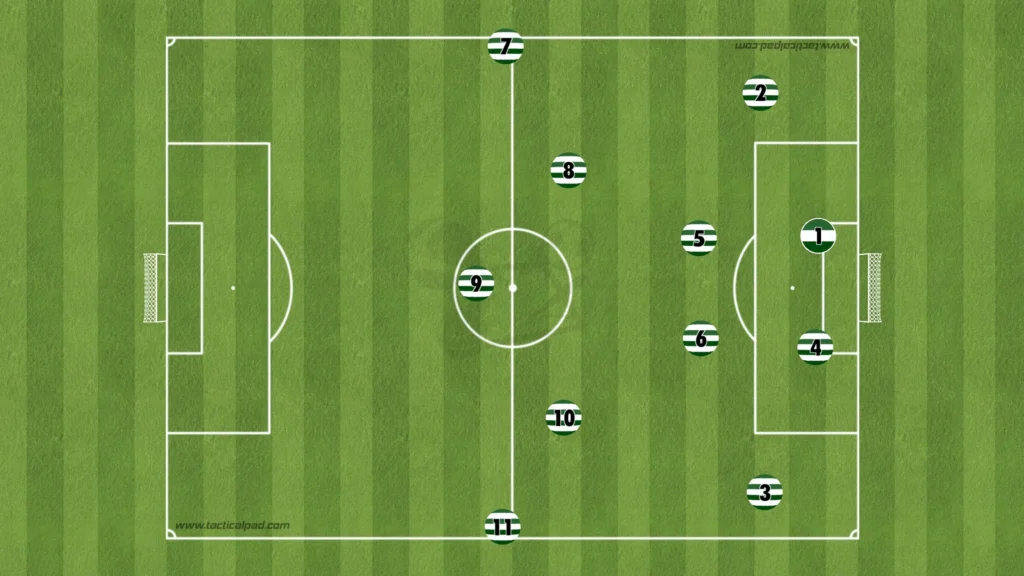
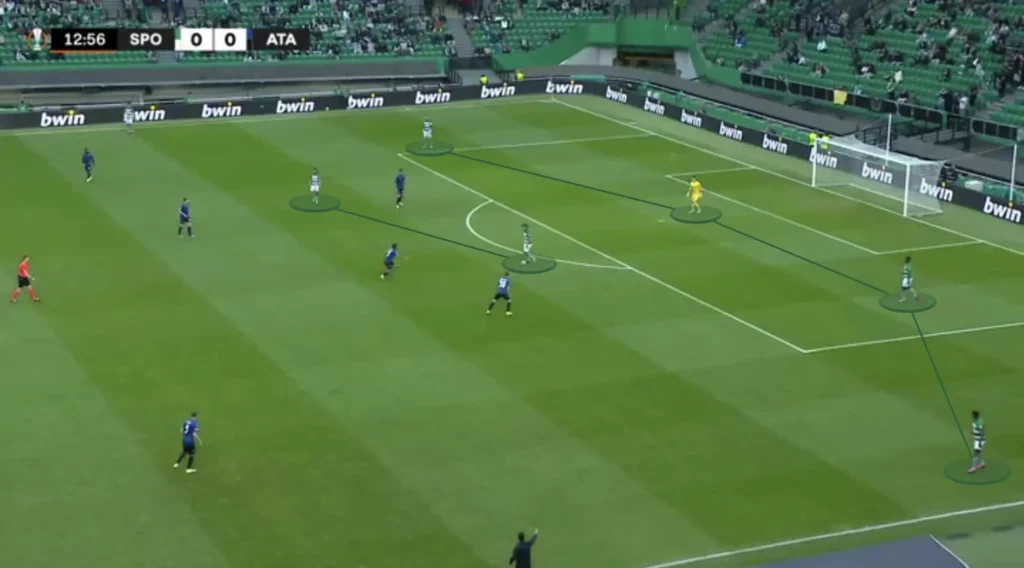
They often drop with the attacking midfielders and like using the goalkeeper, which creates numerical superiorities, allowing them to beat the press.
Having four central midfielders creates more options in the center and less space between the players. Amorim likes this because he prioritizes playing through the middle. He needs one player high and wide to pull apart the backline while the rest create numerical advantages in the midfield areas. This builds good conditions in defensive transitions, allowing more players to press when they lose the ball. Another purpose for keeping many players in the middle is to shorten the distance between them. This shortens the length of the passes, which naturally shortens the time between passes. This means the opposition players will have less time to push up and press, giving the Sporting players more time and control.
High Build-up
In the high build-up, Ruben Amorim’s Sporting CP sets up in a 1-3-2-5 formation, the same as in the low build-up without the goalkeeper between the center-backs.
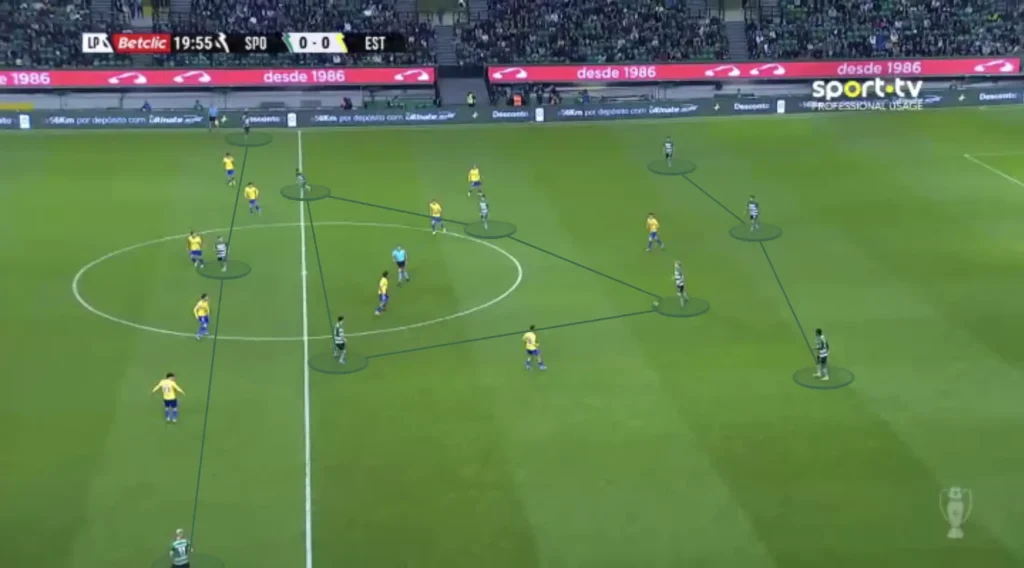
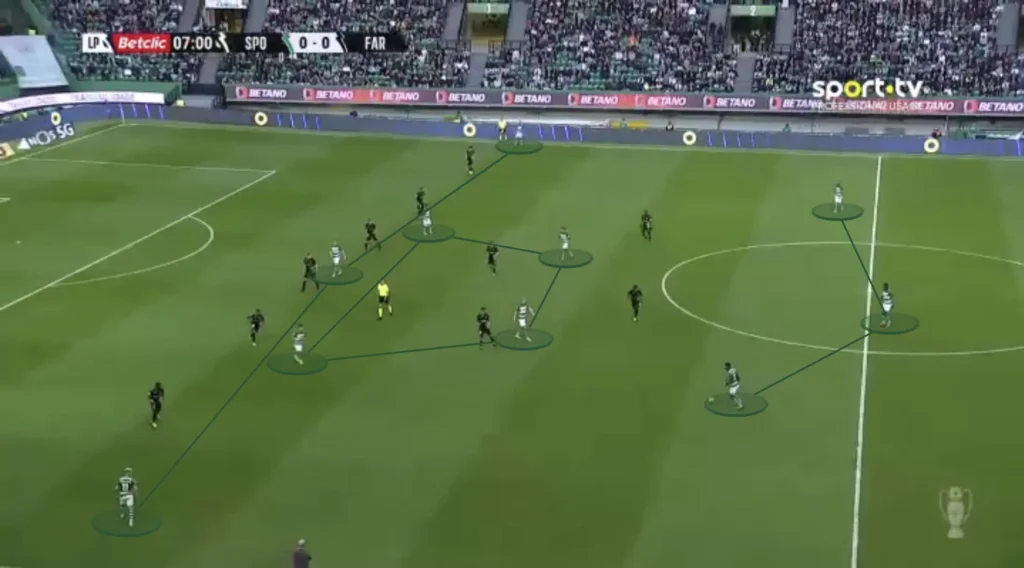
The two holding midfielders are rarely positioned in the same line. One will always be a little deeper, but who it is depends on where the ball is.
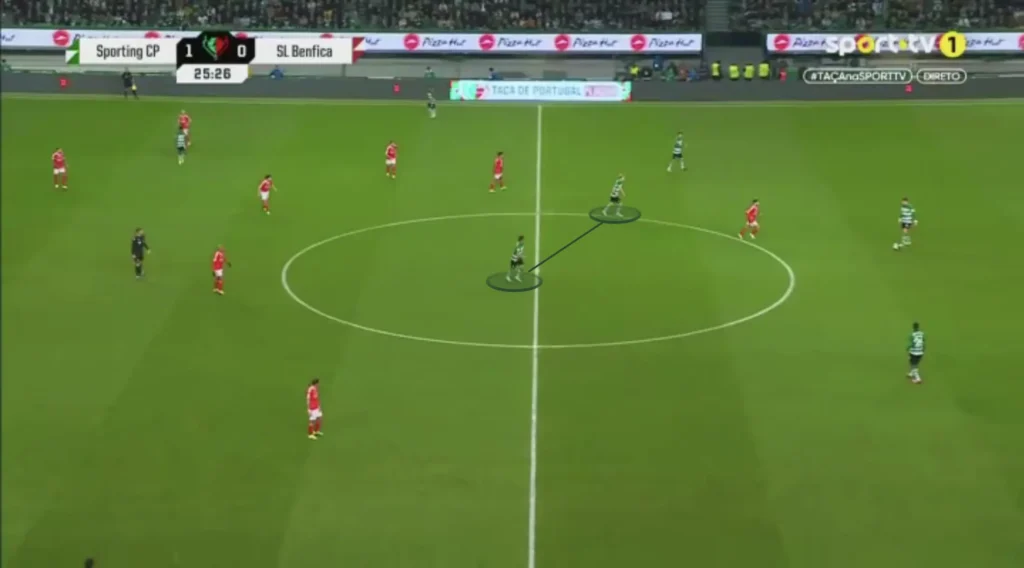
This allows the holding midfielders to play between themselves and opens up more potential passing combinations. They can also use one touch to play to the other midfielder instead of turning and using two or more.

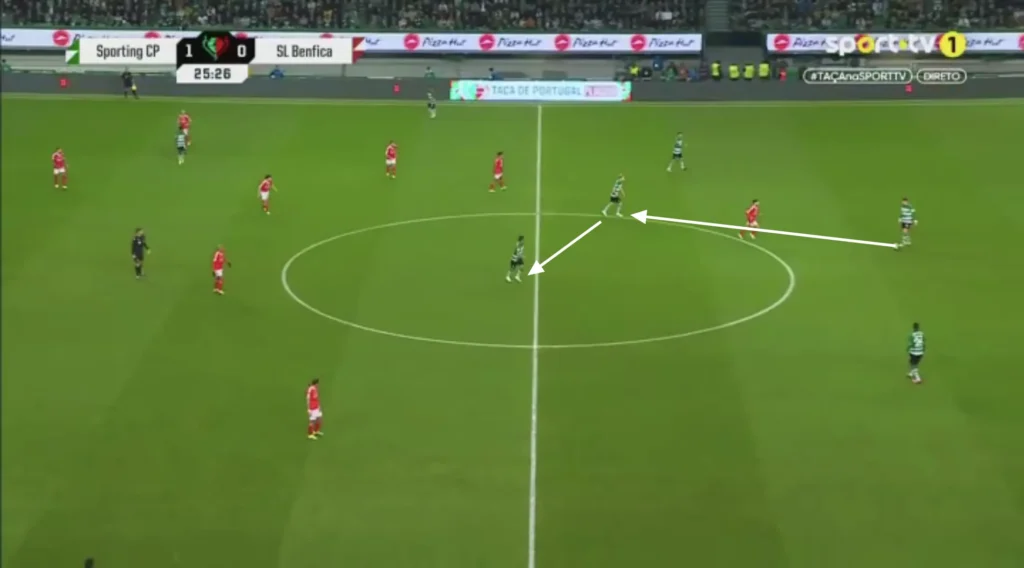
High Backline
A massive aspect of Sporting’s high possession build-up is they keep a high backline. This helps in the counterpress because they get closer to the center. Having more players close to the center who can win the ball back makes it difficult for the opposition to recycle possession. Furthermore, the high backline shortens the distance between players, shortening the time and length of the passes and preventing the opposition from pushing up their defense.
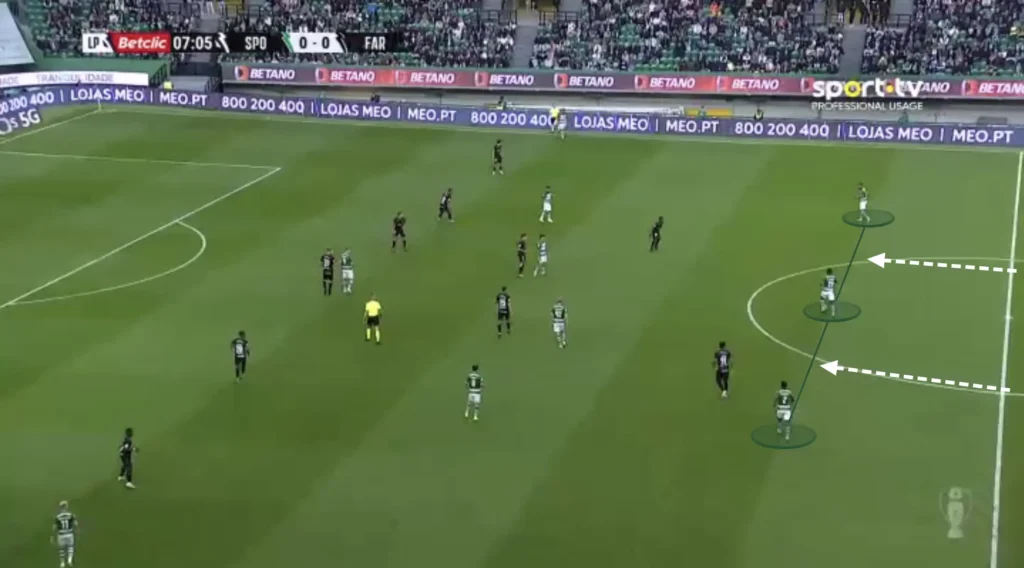
Finding the Pockets
Sporting always tries to find the attacking midfielders in the pockets. Their midfield numerical superiority usually means that at least one will be open. They will look for passes from the back or the wing, breaking lines and finding an attacking midfielder who will turn and drive at the defense.

Numerical Advantages
Another massive aspect of Sporting’s high build-up is their ability to create numerical advantages against the opposition’s defensive line. Their front five naturally becomes numerically superior against a back four, which they are great at taking advantage of.
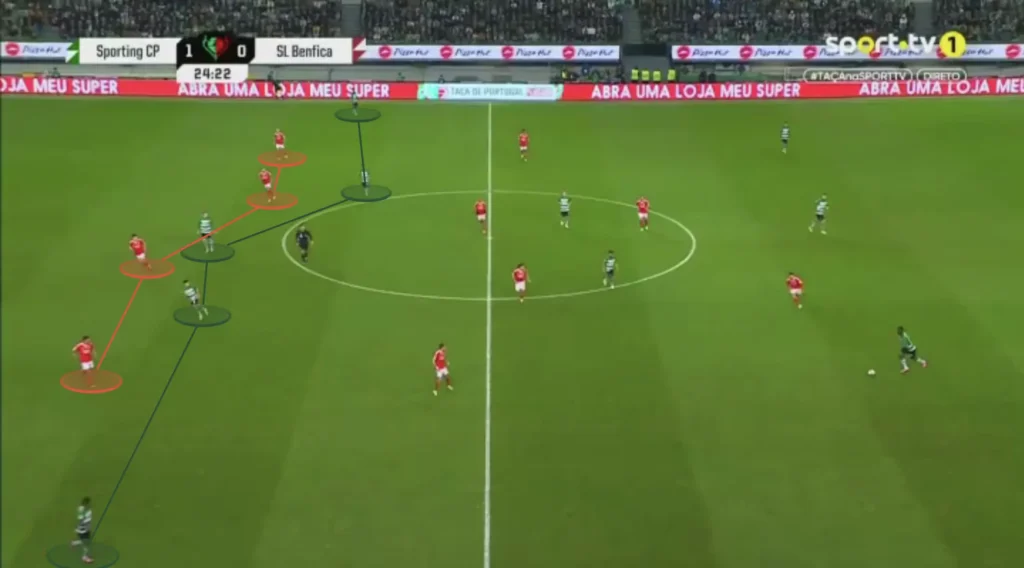
When the defending team is positioned on one side, the weak-side fullback becomes vulnerable to the long switch of play due to the 1v2 against Sporting’s winger and attacking midfielder. Amorim’s team often capitalizes on this by getting the ball to the winger and creating many opportunities from 2v1 situations on the wing and in the half-spaces.
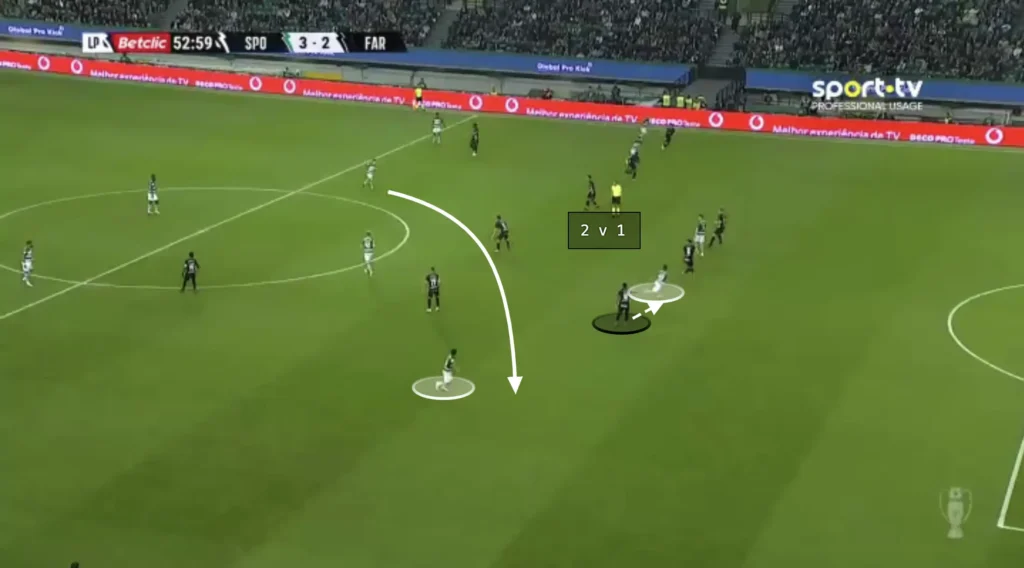
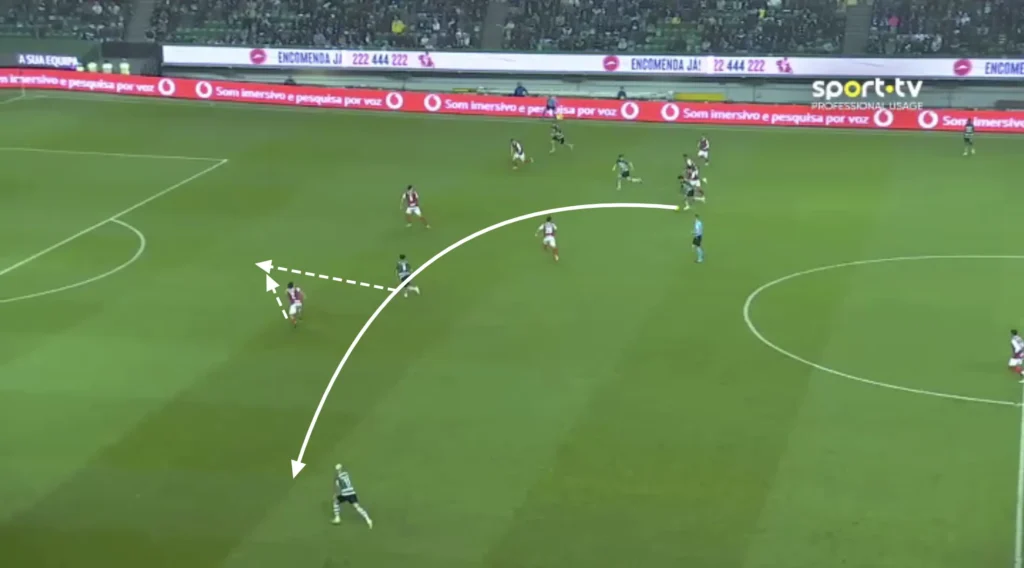
They also exploit this numerical superiority with a counter-movement between the winger and attacking midfielder. When a wide center-back has the ball, the attacking midfielder will make the run in behind while the winger drops to open a passing lane. This creates a question for the fullback. If he steps out on the winger, the space behind him opens up, allowing the center-back to play a through-ball to the attacking midfielder. However, if he stays inside to cover the run, the ball can be played to the winger, who can turn and attack the defense.
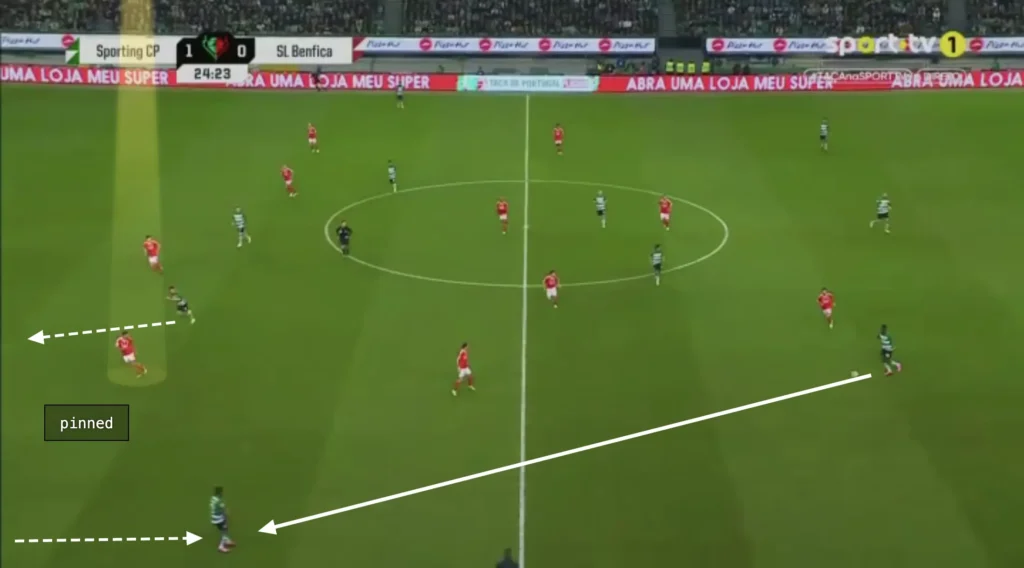
Final Third
Attacking the Half-Space
Sporting CP is an excellent team in the final third. They will always create many chances, mainly by attacking the space between the opposition center-back and fullback.
One way they do this is by using an underlap. Sporting will often, through their possession, find space for their wingers after switching play with a long ball. The winger will then attack his fullback, waiting for the run from an attacking midfielder.
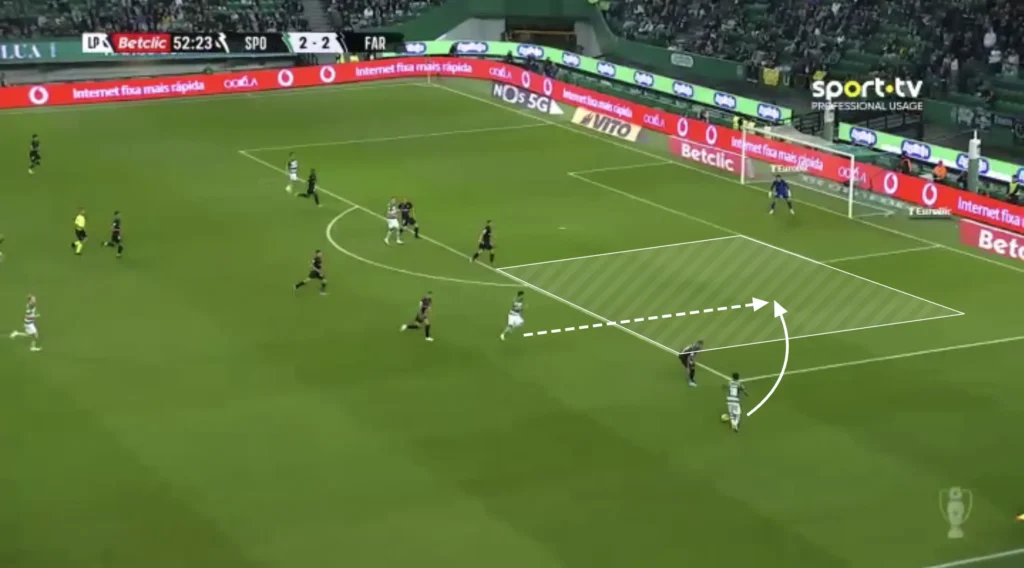
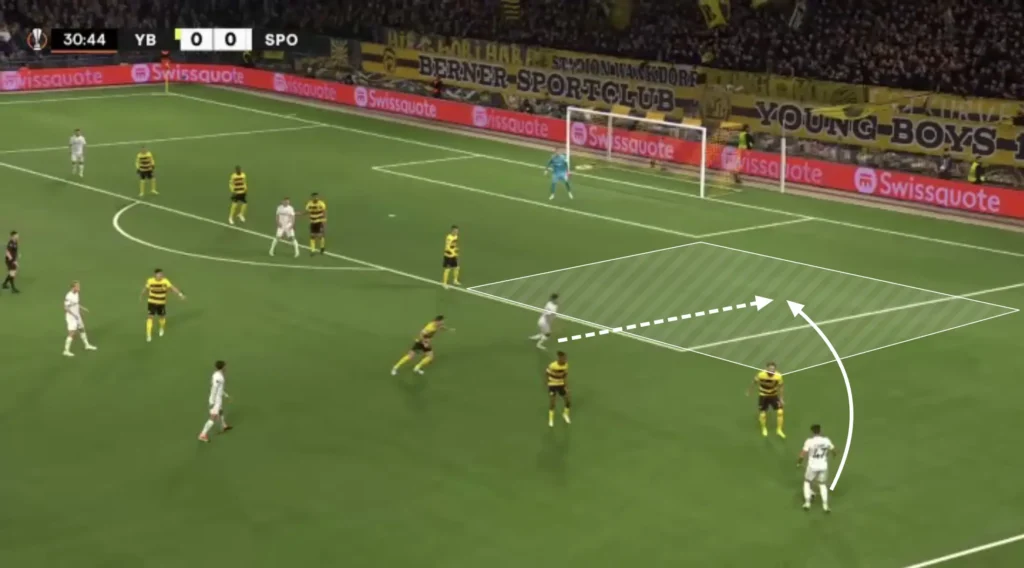
The defending midfielder who is responsible for the attacking midfielder often struggles to track the run, which forces the center-back to make a decision. If he goes to track the run, he leaves a massive space in the box for the striker to exploit.
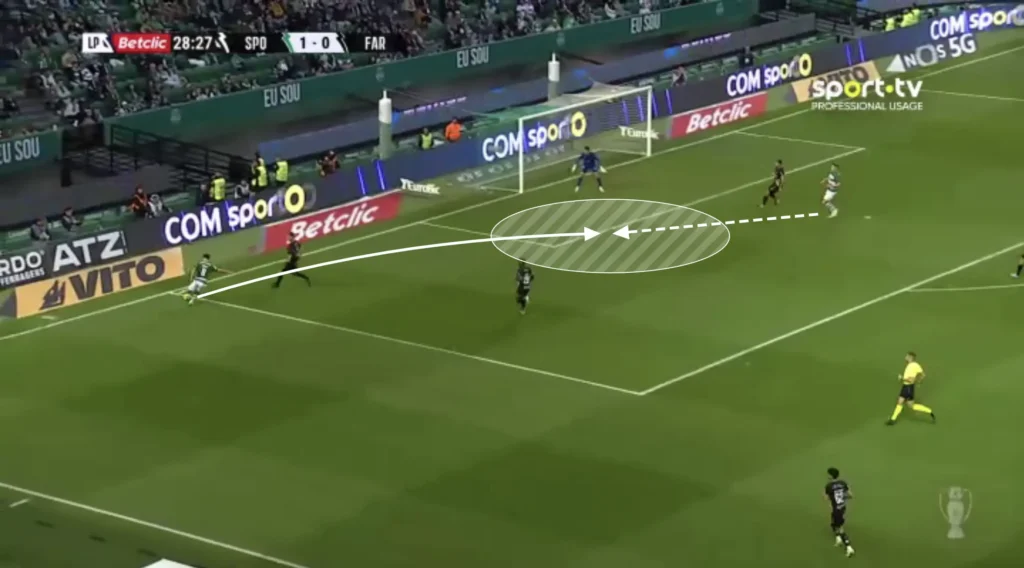
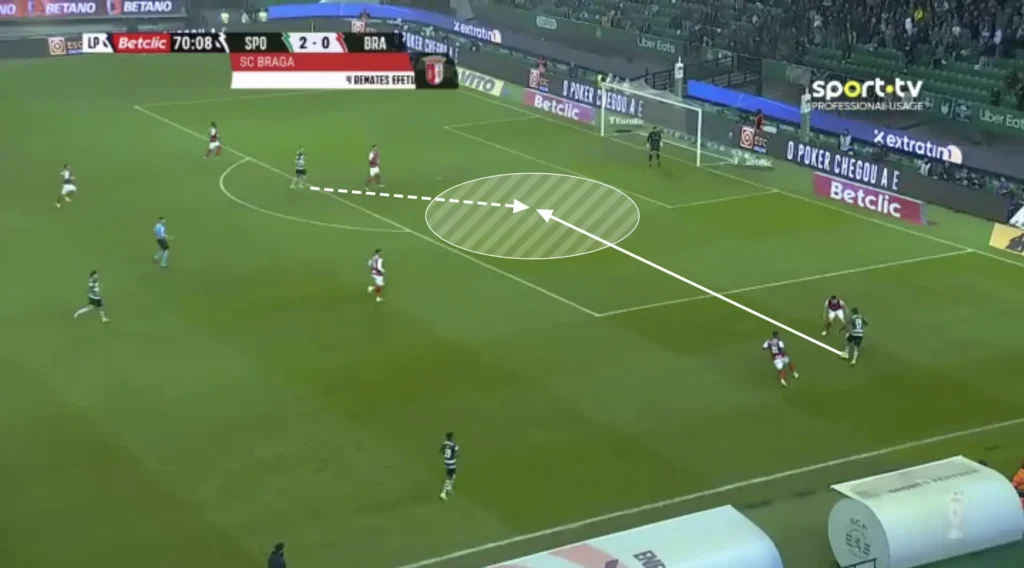
Therefore, many center-backs will stay in the center, allowing the winger to play the ball into the free space to the open attacking midfielder. From there, the attacking midfielder will have time and space, enabling him to cross the ball to his teammates, who can score.
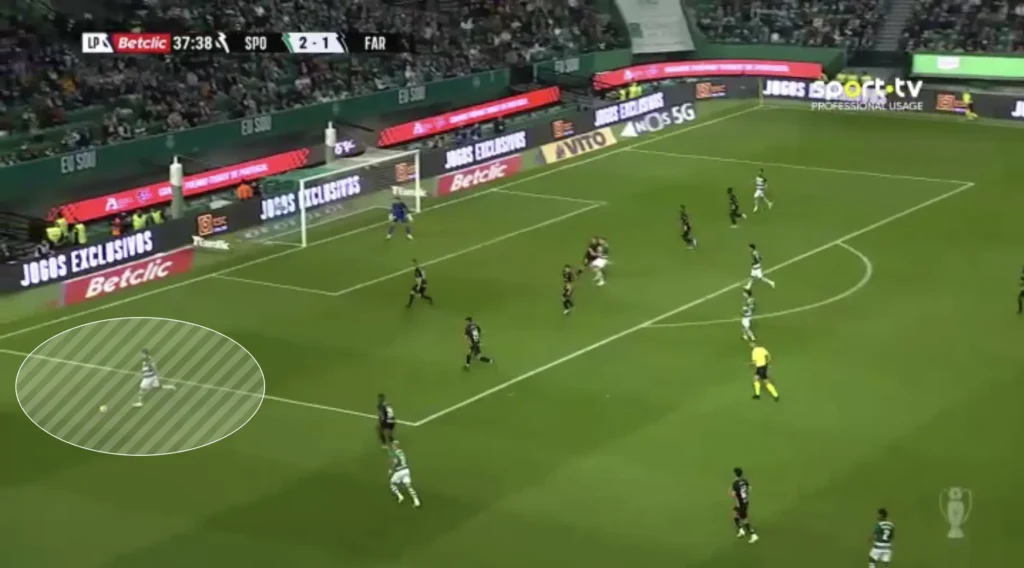
The winger, however, does not have to play the ball to the underlapping player. The underlapping player will often drag away a defensive midfielder, which opens the space inside. The winger can take the ball inside and shoot or find a pass to a free player in front of the backline.
Amorim’s team also exploits the space between the center-back and the fullback by playing through-balls from the midfield or backline.
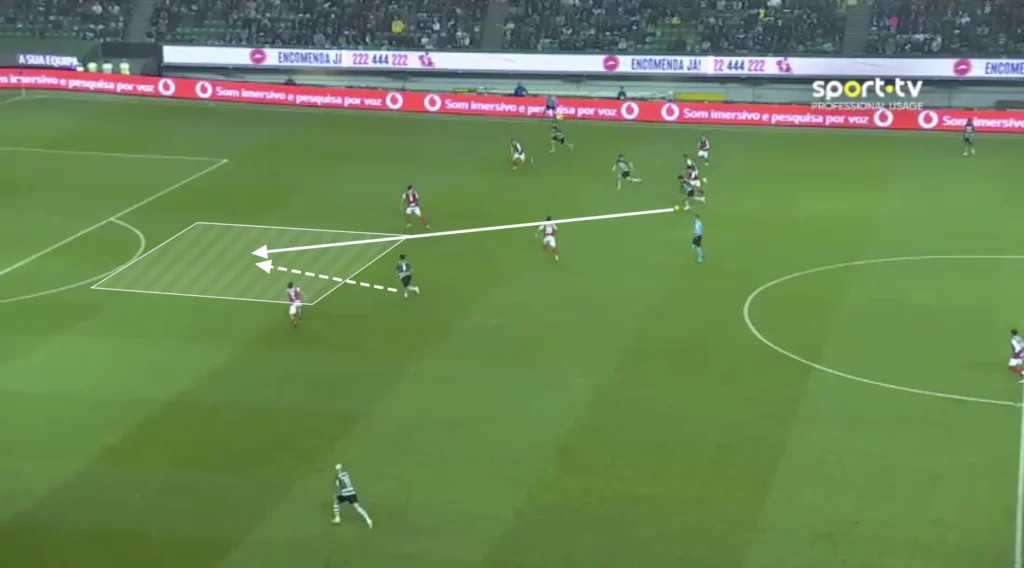
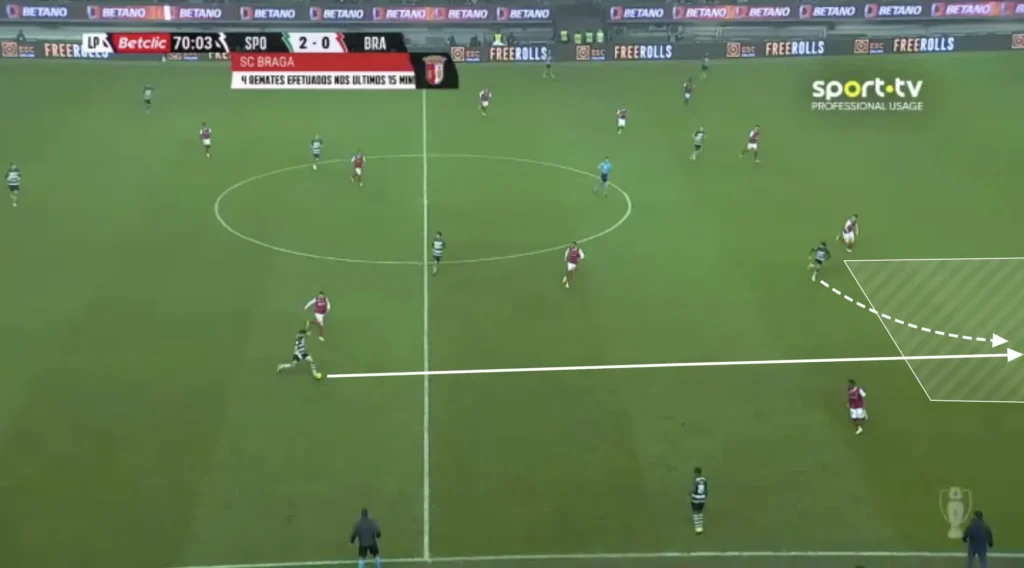
Many Players in the Box
The attacking midfielders and wingbacks always look to make runs into the box when the ball is in the final third, often getting four or five players into these areas to create overloads. The numerical advantages in the box force the defending team to make decisions and leave some players open.
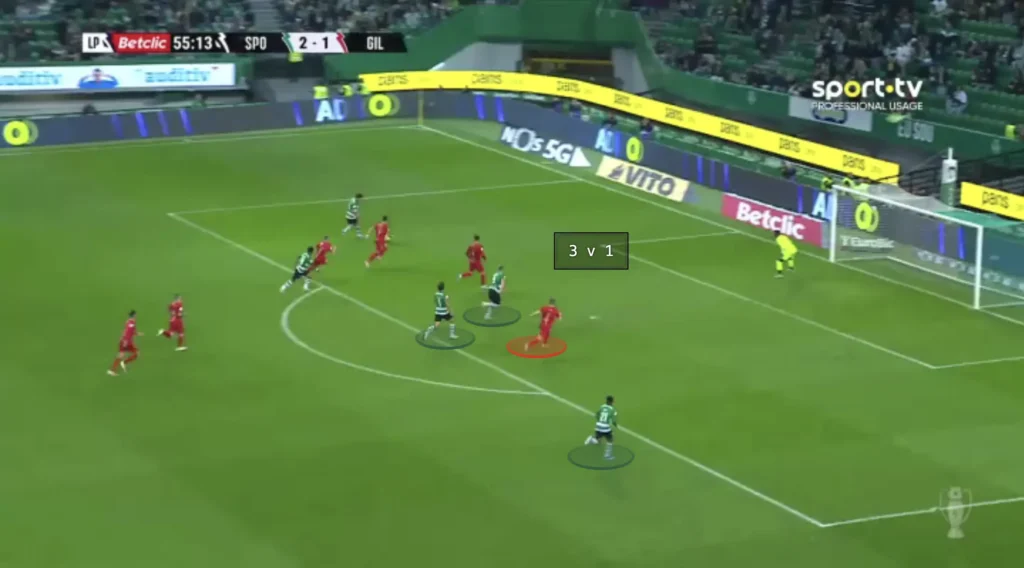
Sporting score many of their goals from crosses to the wingback at the back post. The opposition fullback will often be preoccupied with a Sporting attacking midfielder, which leaves massive space at the back post for the wingback to attack.
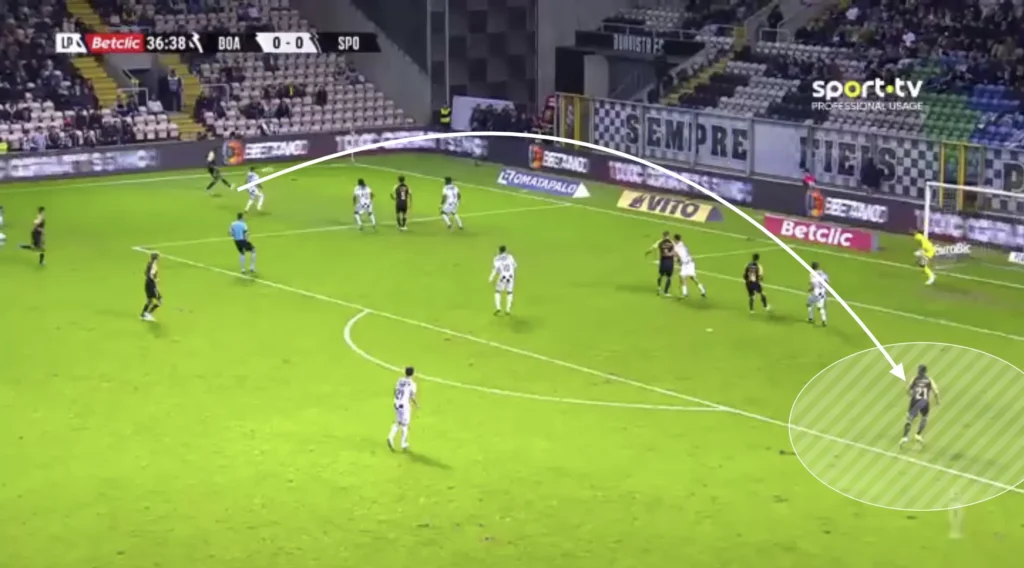
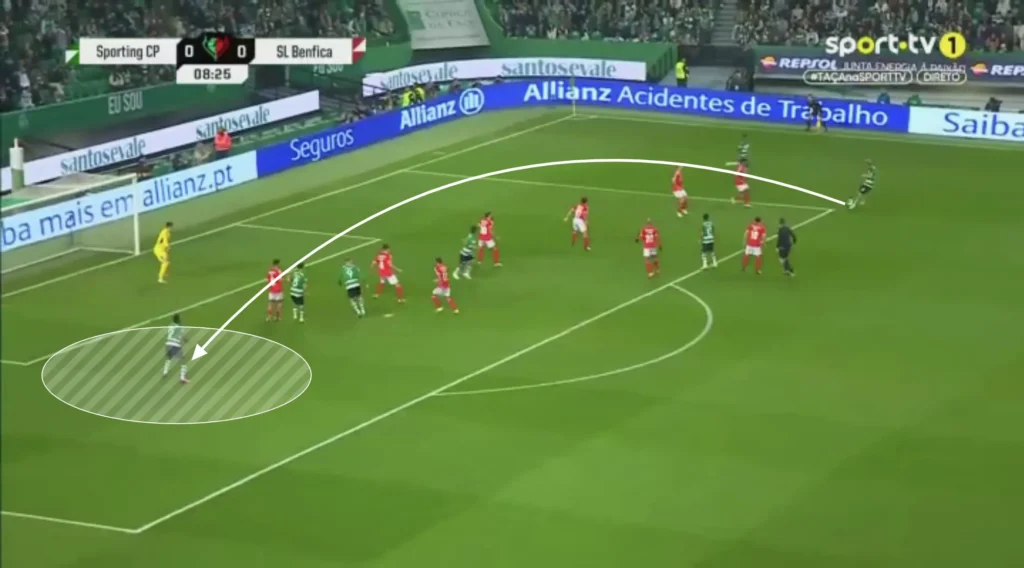
Ruben Amorim also positions many Sporting players outside the box, ready for the second balls and cut-backs. They always succeed in pushing down the opposition’s defense, which opens the space in front of the backline. Sporting often finds their midfielders in these spaces, who can shoot or combine with an attacker to create goalscoring opportunities.
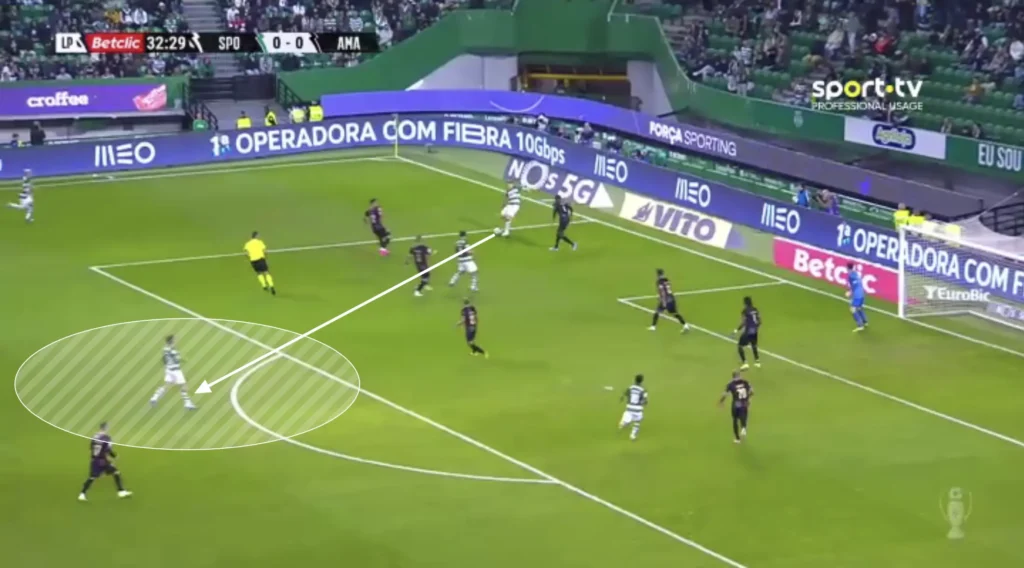
Defending
Low Press
In the low press, Ruben Amorim’s Sporting uses a 1-5-2-3 formation. They look to set up in a mid-block, always trying to stay compact while closing the center, forcing the opposition out wide. Therefore, they like to play with a high backline, making the space to the midfield line as small as possible.
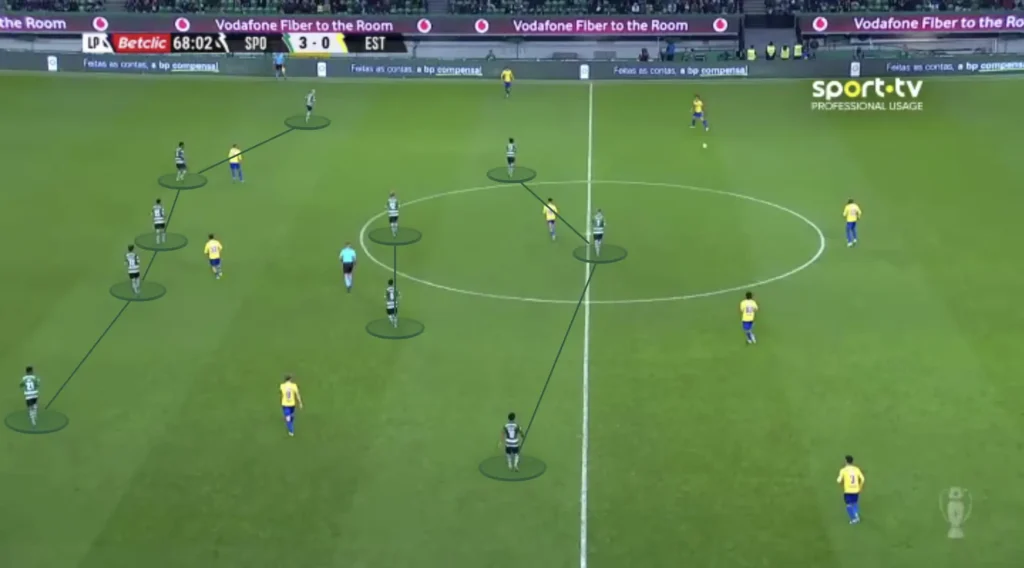
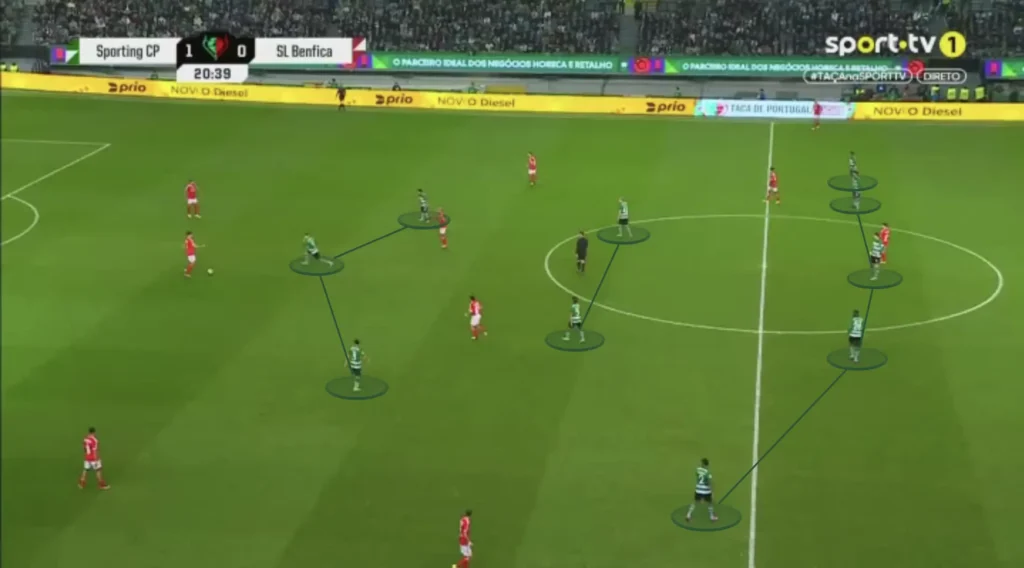
Sporting looks to squeeze the pitch when defending. This means constantly pushing the team up as much as possible. Every time the opponent plays a slow, sideways pass or a back pass, Sporting’s first line of pressure pushes up, with the rest of the team following to stay compact. When the next pass comes, they push up even more, forcing the opponent back even more. They do this because it pushes the opponent further away from Sporting’s goal, making it harder to create chances.
High Press
Ruben Amorim’s Sporting presses the opposition high when possible and does so in their 1-5-2-3 formation. The striker, however, drops down, blocking an opposition midfielder, while the wingers push up on the center-backs. They try to push the opposition to one side, coming across with many players and winning the ball.
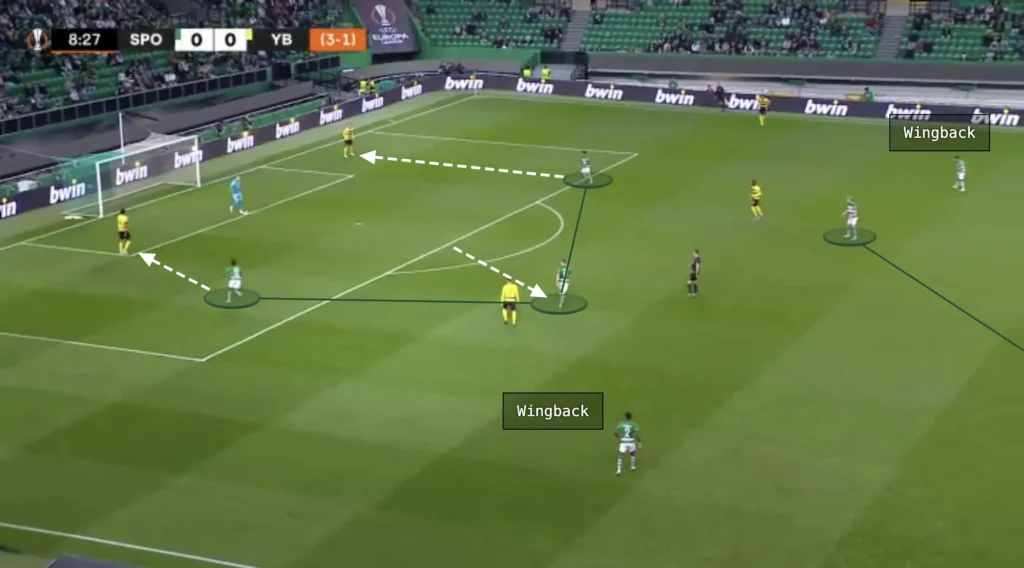
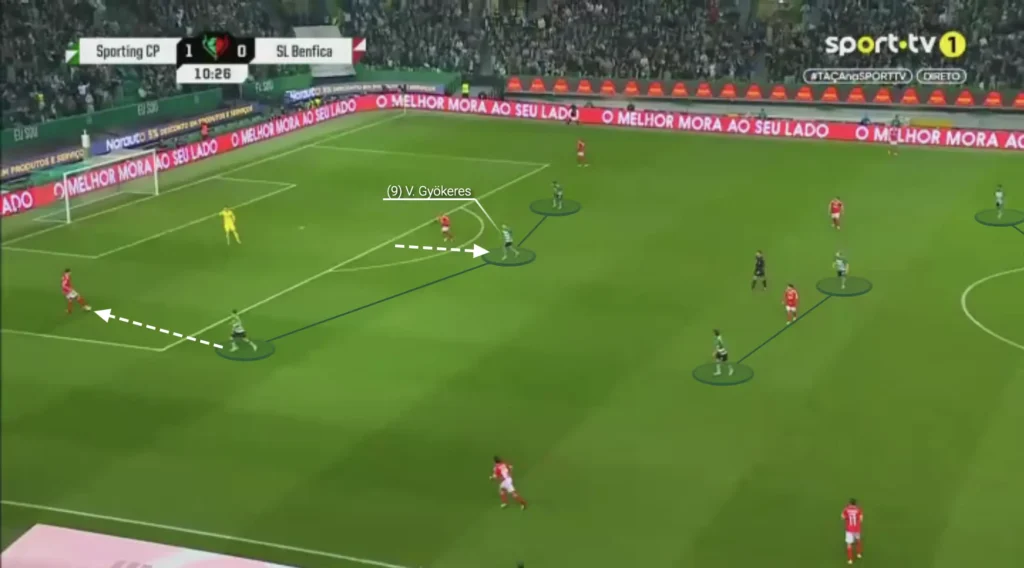
Defensive Transitions
Positioning many players centrally, creating a numerical advantage in the midfield, creates good conditions in defensive transitions. Many players close to the ball after losing possession means that many players can work towards regaining possession. Amorim’s team, therefore, often regains possession directly after losing it.
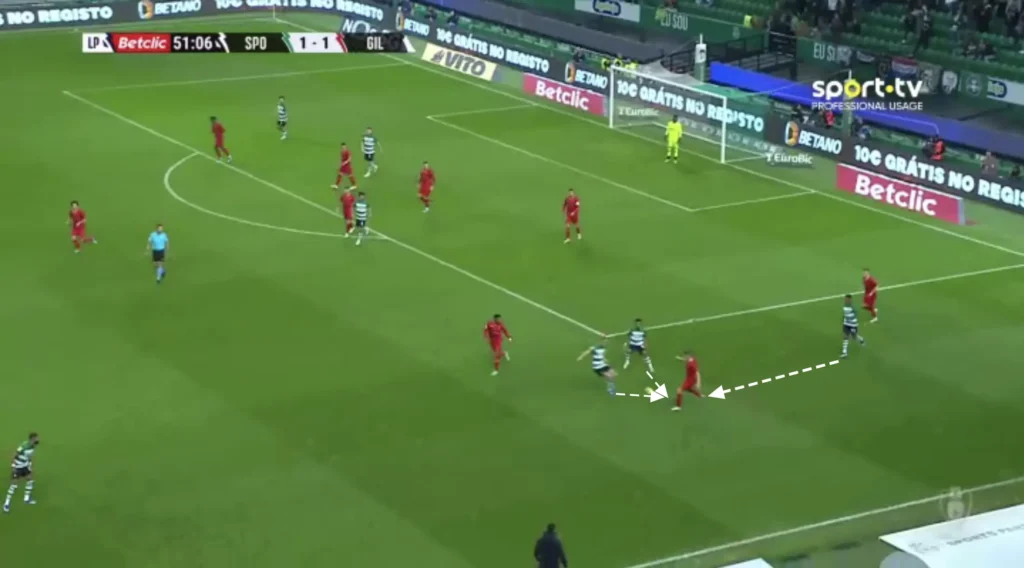
Final Thoughts
In conclusion, our tactical analysis of Ruben Amorim’s Sporting CP unveils a meticulously crafted football philosophy that has elevated the team’s performance to remarkable heights. Amorim’s emphasis on defensive organization and fluid attacking movements has created a well-balanced squad capable of navigating the challenges of top-tier football. The team’s adaptability in transitioning between various formations and defensive structures showcases Amorim’s strategic competence. Sporting CP’s success under Amorim is not merely a result of individual brilliance but a collective manifestation of his tactical vision. As we wrap up this analysis, the influence of Ruben Amorim on Sporting CP’s tactical identity stands as a testament to the artistry and effectiveness of his coaching methodology.
